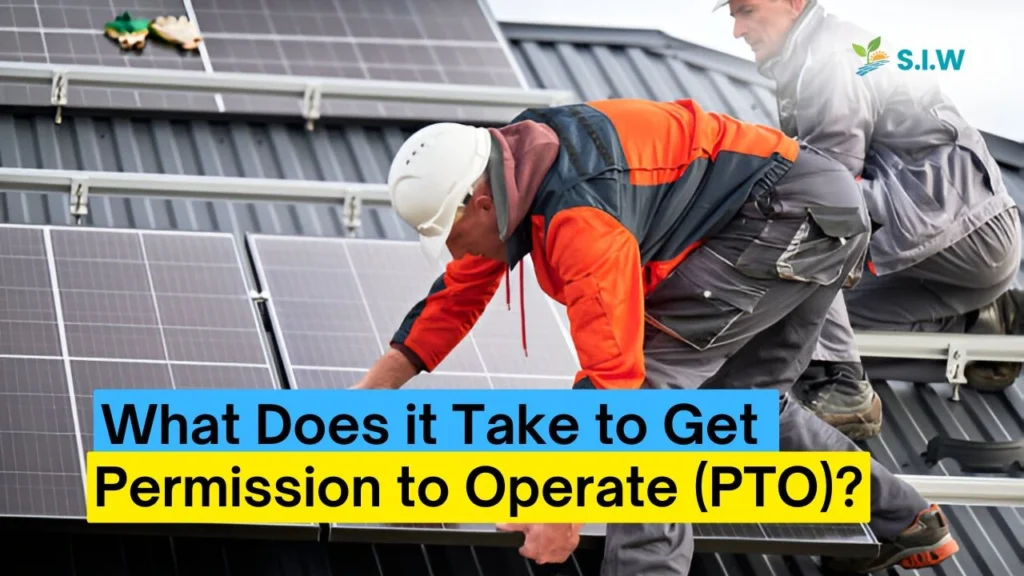Getting a Permission to Operate (PTO) is a critical milestone in your journey towards a fully functional solar power system. PTO signifies that your system meets all regulatory and safety standards and is ready to be interconnected with the grid. Below, we break down the steps involved, why they are essential, and how you can expedite the process.
Understanding Permission to Operate (PTO)
The Permission to Operate is the green light from your utility provider allowing your solar system to be grid-connected. This authorization ensures that your solar setup adheres to all local and utility-specific guidelines for safe operation.
Why PTO is Crucial
Without PTO, your solar system cannot legally send energy back to the grid or receive grid power in times of shortfall. Securing this approval protects both the consumer and the utility from potential risks or damages.
Key Steps to Get PTO for Solar Systems
1. System Installation and Inspection
Before even applying for PTO, your solar system must be installed by a certified installer, ensuring it meets all engineering and safety standards. Once installed, a local building inspector must verify that your system complies with all local codes and safety regulations.
2. Submitting Documentation to Utility Provider
After installation and inspection, several documents need to be submitted to your utility company. These include:
- System Design Schematics: Detailed engineering plans of your solar system.
- Electrical Inspection Reports: Certifications proving the system’s electrical safety.
- Interconnection Agreement: A formal agreement between you and the utility, outlining responsibilities and grid interconnection policies.
3. Utility Review and Site Visit
The utility company will review all submitted documentation and may conduct a physical inspection of the site to ensure everything meets their standards. This step can take anywhere from a few days to several weeks, depending on the utility’s workload.
4. Smart Meter Installation
In most cases, your utility will require a bi-directional smart meter to monitor both the energy your system sends to the grid and what you draw from it. If your home doesn’t already have a smart meter, this will be installed during the PTO process.
5. Final Approval
Once all steps have been completed and your system has passed inspection, the utility company will issue a formal Permission to Operate. At this point, you can legally start generating and sending solar power to the grid.
Factors That Can Delay PTO
While the process seems straightforward, several factors can cause delays:
- Incomplete Documentation: Ensure all forms, agreements, and reports are fully completed and submitted in a timely manner.
- Utility Company Backlogs: High volumes of solar installations can slow down the utility’s ability to review and approve PTO requests.
- Inspection Failures: If your system doesn’t meet local building or electrical codes, the inspection will need to be repeated, causing further delays.
Tips to Expedite Your PTO Approval
1. Choose a Certified Installer
Work with a solar installer who is well-versed in local codes and has experience navigating the PTO process. They will ensure that everything is set up to pass inspections the first time around.
2. Prepare All Documents Early
Make sure you have all necessary documents ready to submit as soon as the installation is complete. Delaying documentation submission is a common cause of slow PTO approvals.
3. Follow Up With Your Utility
Be proactive. Contact your utility provider to confirm they have all the information they need and check the status of your application regularly.
Post-PTO: What Happens Next?
Once you have PTO, your solar system is fully operational and can send energy to the grid. This allows you to take full advantage of net metering, earning credits for excess energy generated. Your system will also be able to draw power from the grid during low solar production periods, ensuring reliable energy for your home.
Maintaining Compliance
Even after you receive PTO, it’s essential to continue maintaining your solar system. Regular inspections and maintenance are required to ensure that it continues operating efficiently and safely. Any future modifications or upgrades may require additional approvals.
Why PTO Matters for Solar Success
Obtaining PTO is the final hurdle in getting your solar system fully operational and grid-connected. By following all required steps, submitting documentation correctly, and working with experienced professionals, you can streamline the process and enjoy the full benefits of your solar investment without unnecessary delays.








